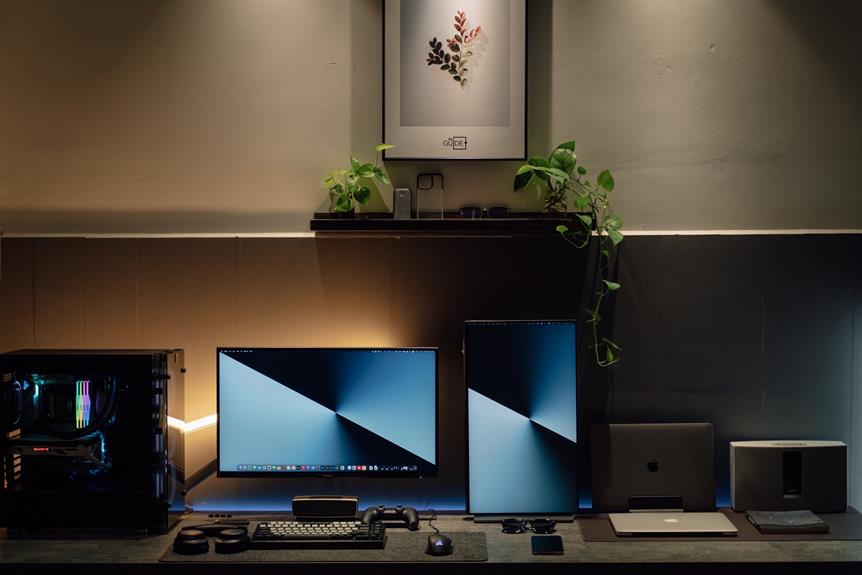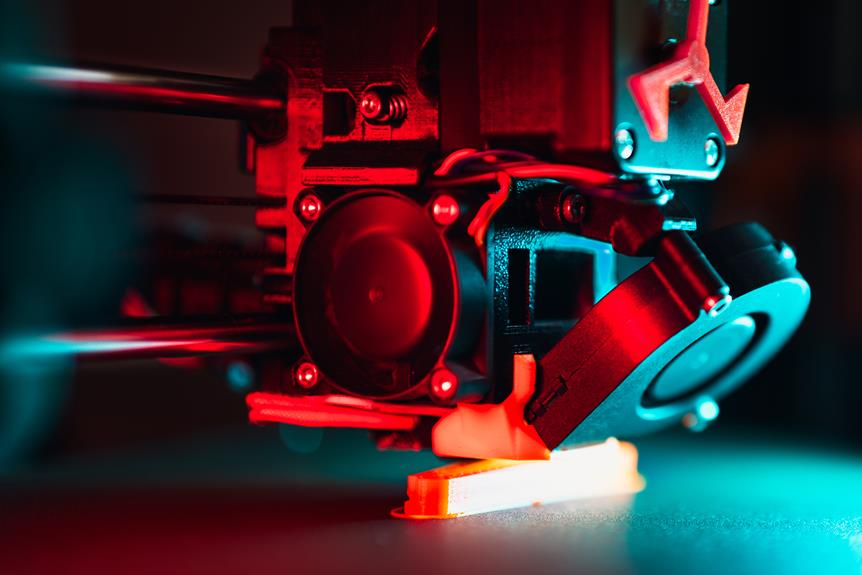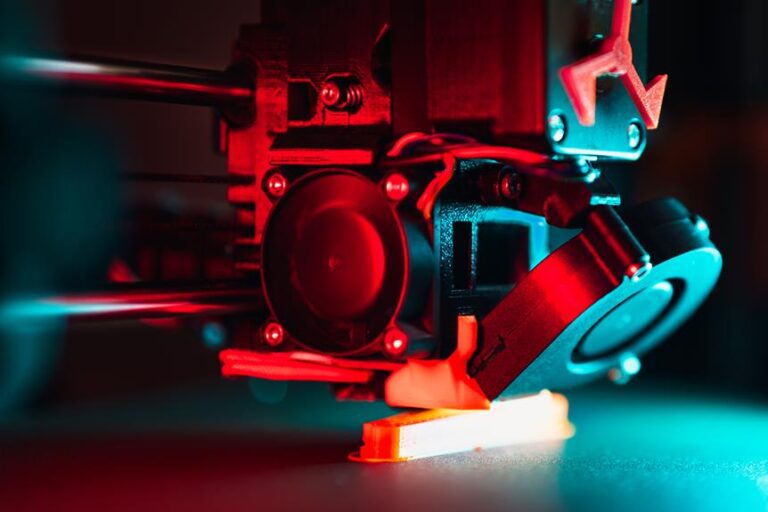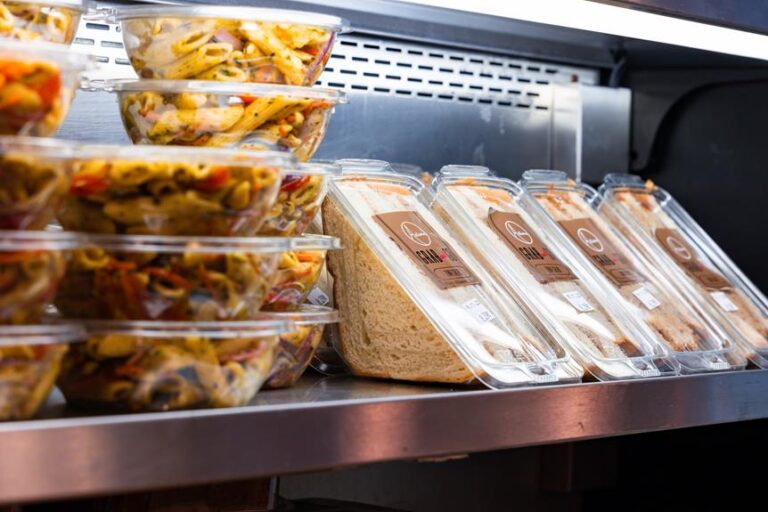Large-format 3D Printers Comparison: Find Your Ideal Printer
Looking for the perfect large-format 3D printer? Look no further!
In this comprehensive comparison article, we will delve into the world of large-format 3D printers, analyzing their build volumes, speed and efficiency, material compatibility, features, and specifications.
We will also evaluate the software and user interface, consider the price and value, and provide expert recommendations.
With customer reviews and ratings, this article aims to liberate you from the confusion and help you find your ideal printer.
Key Takeaways
- SLS printers typically have a larger build volume compared to MJF printers, making them suitable for larger-scale production and accommodating larger objects.
- Speed and efficiency are important factors to consider when selecting a 3D printer, with factors like print head technology, material type, and design complexity affecting speed, while material usage optimization and energy consumption reduction contribute to efficiency.
- Material compatibility is crucial, with different printers having limitations on the types of filaments they can use, as well as requirements for filament diameter and printing temperatures.
- When choosing a printer, it is important to consider features and specifications such as build volume, resolution, print speed, connectivity options, and software compatibility, ensuring they align with specific requirements.
Build Volume Comparison
When comparing large-format 3D printers, it is important to consider the build volume of each printer. The build volume refers to the maximum size of the object that can be printed in a single job. This is a crucial factor to consider as it determines the size and complexity of the objects that can be created using the printer.
In the realm of large-format 3D printers, there are two popular technologies: Selective Laser Sintering (SLS) and Multi Jet Fusion (MJF). SLS printers use a laser to fuse powdered material together, while MJF printers use an inkjet array to selectively apply fusing and detailing agents onto a powder bed. Both technologies offer large build volumes, but SLS printers typically have a larger build volume compared to MJF printers. This means that SLS printers can produce larger objects in a single job.
Another important consideration is the distinction between consumer-grade and industrial 3D printers. Consumer-grade printers are typically smaller in size and have limited build volumes compared to industrial printers. Industrial printers, on the other hand, are designed for larger-scale production and can accommodate larger objects.
Speed and Efficiency Analysis
For a comprehensive evaluation of large-format 3D printers, it is essential to analyze their speed and efficiency in order to determine the most suitable printer for your needs.
The speed of a 3D printer refers to the time it takes to complete a print job, while efficiency refers to the printer's ability to produce high-quality prints with minimal waste and energy consumption.
When comparing the speed of large-format 3D printers, it is important to consider factors such as the print head technology, the type of material being used, and the complexity of the design. Printers with faster print heads, such as those equipped with multiple nozzles or high-speed extruders, can significantly reduce printing time. Additionally, printers that support faster material deposition rates and have larger build volumes can also improve printing speed.
Efficiency, on the other hand, is determined by the printer's ability to optimize material usage, minimize print failures, and reduce energy consumption. Some printers offer features like automatic bed leveling, filament sensors, and power-saving modes to enhance efficiency. It is also important to consider the printer's maintenance requirements and its compatibility with different software and materials.
Material Compatibility Breakdown
The material compatibility breakdown is crucial in determining the range of materials that a large-format 3D printer can effectively print with. This breakdown allows users to identify which printers are capable of accommodating their specific material needs.
Here are some key factors to consider when assessing material compatibility:
- Filament Types: Some printers are limited to specific filament types, such as PLA or ABS, while others offer a wider range of options, including flexible filaments and high-performance materials.
- Filament Diameter: Printers may have specific requirements for filament diameter, so it's important to ensure that the printer can accommodate the size of filament you intend to use.
- Temperature Settings: Different materials require different printing temperatures. Make sure the printer has the capability to reach and maintain the necessary temperature for your desired materials.
- Build Plate: The build plate material and surface texture can affect adhesion and print quality. Consider whether the printer's build plate is suitable for the materials you plan to use.
- Enclosure: Some materials, like ABS, require a controlled environment to prevent warping. Check if the printer offers an enclosure or if it's compatible with aftermarket enclosures.
Considering the material compatibility breakdown is crucial in choosing a large-format 3D printer that can meet your specific printing needs. Once you have a clear understanding of the materials you want to work with, it's time to explore the printer features and specifications that align with your requirements.
Printer Features and Specifications
Several large-format 3D printers offer a wide range of features and specifications, allowing users to find the printer that best suits their needs. When evaluating printer features and specifications, it is important to consider factors such as build volume, resolution, print speed, and connectivity options.
Build volume refers to the maximum size of the object that can be printed, and it is crucial to choose a printer with a build volume that can accommodate your desired projects.
Resolution determines the level of detail and precision that can be achieved in the printed objects, so it is essential to choose a printer with a high resolution if intricate details are important to you.
Print speed is another important factor to consider, as it determines how quickly your prints can be completed.
Connectivity options such as USB, Ethernet, and Wi-Fi allow for convenient and efficient file transfer to the printer. By carefully assessing these features and specifications, users can make an informed decision and select a large-format 3D printer that aligns with their specific requirements.
Now, let's move on to evaluating the software and user interface, which play a crucial role in the overall user experience and ease of operation.
Software and User Interface Evaluation
When evaluating large-format 3D printers, it is important to assess the software and user interface in order to determine their usability and compatibility with your specific needs. The software and user interface play a crucial role in the overall experience of using a 3D printer, as they directly impact the ease of use, functionality, and flexibility of the printer.
Here are five key aspects to consider when evaluating the software and user interface of a large-format 3D printer:
- Compatibility: Ensure that the software is compatible with your operating system and design software. It should also support the file types you commonly work with.
- User-Friendliness: The software should have an intuitive and user-friendly interface that allows for easy navigation and control. It should be easy to learn and use, even for beginners.
- Feature Set: Evaluate the features offered by the software, such as support generation, slicing, and customization options. Choose a software that offers a comprehensive set of features that align with your specific requirements.
- Updates and Support: Consider the frequency of software updates and the level of technical support provided by the manufacturer. Regular updates ensure that you have access to the latest features and improvements.
- Integration: If you plan to integrate the 3D printer into an existing workflow or production process, ensure that the software is capable of seamless integration with other software and hardware components.
Price and Value Assessment
For a comprehensive evaluation of large-format 3D printers, it is essential to thoroughly assess the price and value of each printer, comparing their features and capabilities. Price is an important factor to consider, as large-format 3D printers can vary greatly in cost. However, it is equally important to consider the value that each printer provides in relation to its price.
When assessing the price of a large-format 3D printer, it is important to consider the initial cost of the printer itself, as well as any additional costs such as maintenance, materials, and software. Additionally, it is important to consider the long-term value of the printer, including its durability, reliability, and the availability of customer support and spare parts.
In terms of value, it is important to consider the features and capabilities of each printer and how they align with your specific needs and requirements. Some printers may offer advanced features such as multi-material printing, high-resolution printing, or large build volumes, while others may focus on ease of use, speed, or precision.
Customer Reviews and Ratings
Numerous customers have provided reviews and ratings for large-format 3D printers, offering valuable insights into the performance, reliability, and overall satisfaction with these printers. Here are some key points to consider based on customer feedback:
- Print Quality: Customers often mention the print quality as a crucial factor in their reviews. They discuss the level of detail, accuracy, and consistency achieved by the printer, providing a good indication of its capabilities.
- Reliability: Reliability is another aspect that customers focus on. They highlight the printer's ability to consistently produce high-quality prints without frequent breakdowns or malfunctions.
- Ease of Use: Many customers appreciate printers that are user-friendly, with intuitive interfaces and easy setup processes. They often mention the importance of clear instructions and good customer support.
- Build Volume: The available build volume is a significant consideration for customers looking for large-format 3D printers. Reviews often mention the printer's capacity to accommodate larger models and the convenience it offers for printing multiple objects simultaneously.
- Value for Money: Customers assess the overall value for money by considering factors such as print quality, reliability, ease of use, and customer support. They evaluate whether the printer's performance justifies its price.
Expert Recommendations and Considerations
The expert's recommendations and considerations play a crucial role in guiding individuals towards selecting the most suitable large-format 3D printer for their specific requirements. These experts assess various factors that are important in the decision-making process.
When considering a large-format 3D printer, experts advise individuals to evaluate the build volume, which determines the size of objects that can be printed. They also recommend considering the printer's resolution, as this determines the level of detail that can be achieved in the printed objects. Additionally, experts emphasize the importance of considering the printer's print speed, as this affects the overall efficiency and productivity of the printing process.
Furthermore, experts suggest evaluating the printer's material compatibility. Different printers may be capable of printing with different materials, and it is important to ensure that the chosen printer is compatible with the desired materials for the intended applications.
In addition to these technical considerations, experts also recommend evaluating the printer's reliability and support. This includes considering factors such as the printer's warranty, customer support, and the availability of spare parts.
Frequently Asked Questions
Can Large-Format 3D Printers Be Used to Print Multiple Materials Simultaneously?
Large-format 3D printers have the capability to print multiple materials simultaneously, thanks to their dual extruder systems. This allows for the creation of complex models with different properties, enhancing the versatility and functionality of the printed objects.
Are Large-Format 3D Printers Suitable for Industrial-Scale Production?
Large-format 3D printers are indeed suitable for industrial-scale production due to their ability to create large and complex objects with high precision and efficiency. They offer a cost-effective solution for manufacturing industries seeking to enhance their production capabilities.
What Are the Energy Requirements for Operating a Large-Format 3D Printer?
The energy requirements for operating a large-format 3D printer depend on various factors, such as the printer's size and technology. These printers typically consume more energy compared to smaller ones due to their larger build volume and higher printing speeds.
Can Large-Format 3D Printers Be Used for Printing Functional Prototypes?
Yes, large-format 3D printers can be used for printing functional prototypes. These printers have the capability to produce large-scale objects with intricate details, making them suitable for creating prototypes that closely resemble the final product.
Are There Any Post-Processing Steps Required After Printing With a Large-Format 3D Printer?
Yes, there are post-processing steps required after printing with a large-format 3D printer, such as removing support structures, sanding, and applying finishes. These steps ensure the final product meets the desired quality and functionality standards.
Conclusion
In conclusion, choosing the right large-format 3D printer requires careful consideration of several factors. These factors include build volume, speed and efficiency, material compatibility, printer features, software and user interface, price and value, customer reviews, and expert recommendations.
By thoroughly evaluating these aspects, individuals can find their ideal printer that meets their specific needs and preferences.
Stay tuned for more detailed analysis and recommendations on the best large-format 3D printers in the market.









